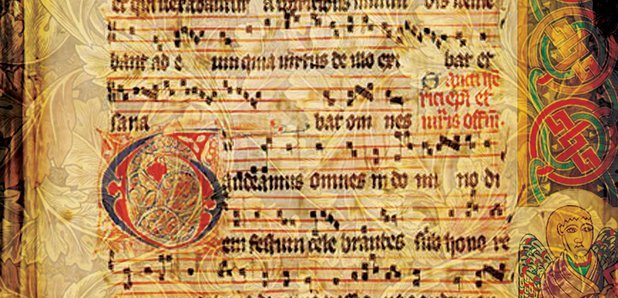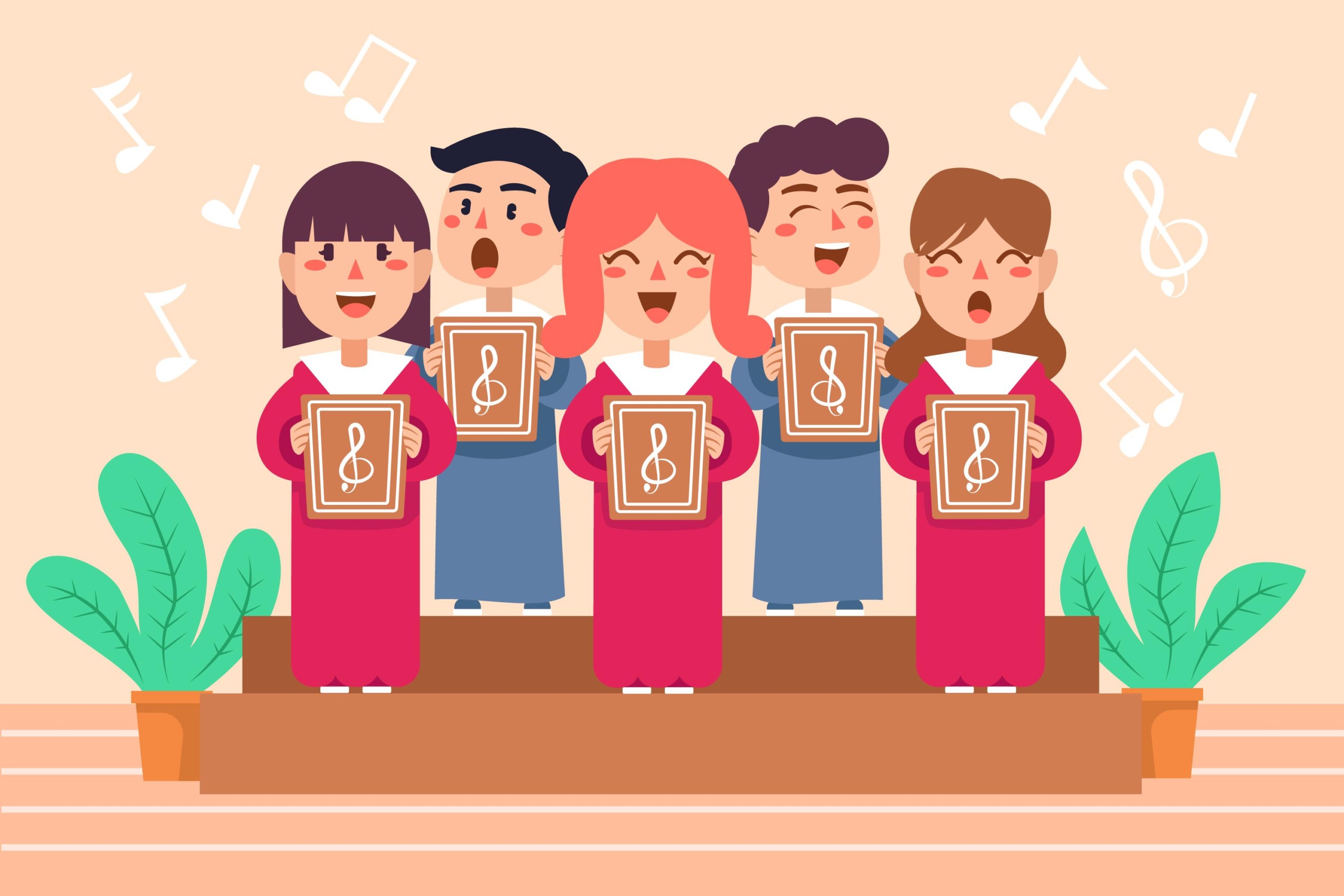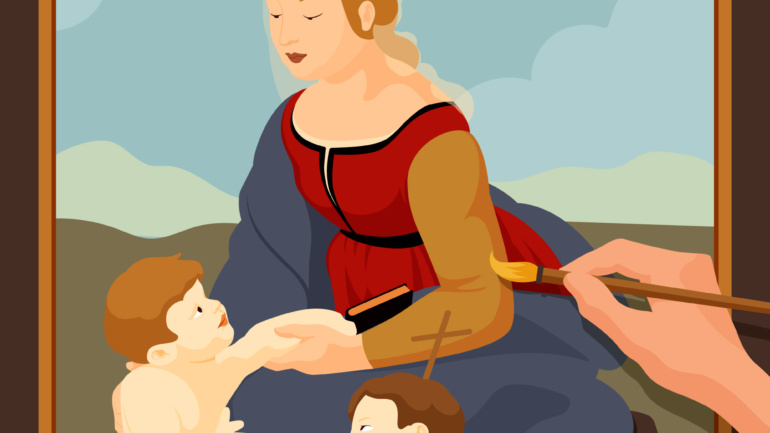After understanding the history of Christianity, we officially enter the era of Western art in the Middle Ages. Today, let’s talk about the earliest notated music in Western history—the Gregorian Chant.
Gregorian Chant
- The Gregorian Chant is the earliest notated music in the West. While ancient Greece and Rome had music, there was no written notation for it. Before the Gregorian Chant, technologies like the phonograph and musical notation systems such as the staff were not yet developed, and ancient music was quite simple and passed down orally, so it was not documented.
- The “Gregorian” in Gregorian Chant refers to Pope Gregory I, the 64th pope of the Catholic Church, who reigned from 590 AD to 604 AD. Pope Gregory I was one of the most influential popes in Catholic history. Under his leadership, the Catholic Church reached its peak, and during his papacy, the Church almost achieved the union of church and state in the Roman territories.
- Pope Gregory I placed great importance on the role of art in religion. He believed that music should be more integrated into religious rituals to help believers connect more deeply with their faith.
Pope Gregory I established a school for church singers specifically to train singers for religious music. This school can be considered one of the earliest music academies in history.
- The Gregorian Chant is a unique form of music. Pope Gregory I organized a major compilation, collecting over 3,000 folk songs from different cultures and arranging them into this distinctive musical form.
- Due to the rapid growth of religion, Gregorian Chant transitioned from being passed down orally to being spread through notation. After all, it was unrealistic for a teacher to travel the country teaching music one-on-one, so the notation system was developed.
At that time, the notation was not a five-line staff but a four-line staff, as shown in Figure 1. The notation was very simple and not as rich as the modern five-line staff system, as shown in Figure 2. The four-line staff simply indicated the pitch of the notes by marking their position on the four lines.

Gregorian Chant Four-Line Staff

Beethoven’s “Piano Sonata No. 8” Five-Line Staff
- The musical characteristic of the Gregorian Chant is “nothing.” There is no emphasis or dynamics, no distinct rhythm, no ornamentation, no counterpoint, and no variations or techniques found in later classical music.
The Gregorian Chant is very simple, with no variation. Music without change evokes a sense of solemnity, rejecting the passions of the world. For example, consider the following piece of music:
Laetatus Sum – Gradual (Modo VII), Canto Gregoriano
- Religious music similar to the Gregorian Chant seeks to reject the passions of the world, letting go of the troubles and desires of earthly life, providing a sense of tranquility. Buddhist music shares this quality. For example, consider the following Buddhist music (Appendix 2):
Thus Have I Heard – Huayan Sūtra Alphabet Chant
Basic Concepts in Music
Using the Gregorian Chant as a starting point, I will briefly introduce five basic concepts in music: dynamics, ornamentation, counterpoint, harmony, and rhythm.
-
Dynamics
Dynamics refer to the volume or intensity of a note. We often say a note has a certain number of decibels. In a performance, there may be a fixed pattern, but it moves from soft to loud and then back to soft, creating the feeling of a swarm of bees flying from a distance, getting closer, and then flying away again. -
Ornamentation
Ornamentation refers to decorative elements added to a melody. These are notes that are not part of the main melody but are added to make the music sound more varied and embellished. Such flourishes and embellishments are seen as distractions from the purity of the music, which is why they are rejected in religious contexts. -
Counterpoint
Counterpoint refers to the interaction of notes between different voice parts. For example, duets between a man and a woman involve singing different parts, or two instruments playing different melodies. The differences create conflict and variation, adding drama. If everyone played or sang the same thing, it would only increase in volume. Counterpoint gives music a sense of richness. However, this richness is also something that Gregorian Chant rejects, as it seeks to avoid passionate expression. Hence, there is no counterpoint in Gregorian Chant. -
Harmony
Harmony is one of the most important concepts in music. We must understand that all Western classical music is essentially polyphonic. In choral music, this is reflected in different singing roles, such as tenor, soprano, bass, etc. In symphonic music, different instruments play different notes, creating harmonies. In Western music, when a note is played, it’s not just a single note but rather different voice parts playing different pitches that combine into one unified sound, which is harmony.
The function of harmony is to make the music’s color and emotional changes richer. Even if the same melody is sung with the same pitch, adding different harmonies can create completely different emotional expressions. Of course, emotional fluctuations are something that religious music avoids, which is why Gregorian Chant does not have harmony. -
Rhythm
Rhythm is the fixed pattern of movement in music, like in a waltz. A waltz is meant to accompany dance, so it has a specific forward-moving rhythm. In classical music, every piece follows its own rhythmic pattern. Gregorian Chant is clearly not created for dance, which is why it lacks rhythm.
One thing we must understand is that it’s not that Gregorian Chant has these techniques but simply doesn’t use them. The reason is that during the time of the Gregorian Chant, these techniques had not yet been fully developed.
Daily Tip
At the end of the program, in case you find the Gregorian Chant a bit too passionless, I’ve specially selected a piece to change things up and shake off any gloom. I recommend you listen to a famous religious piece by Mozart—Ave Verum Corpus, conducted by Peter Neumann and performed by the Cologne Chamber Choir. I hope you enjoy it.


